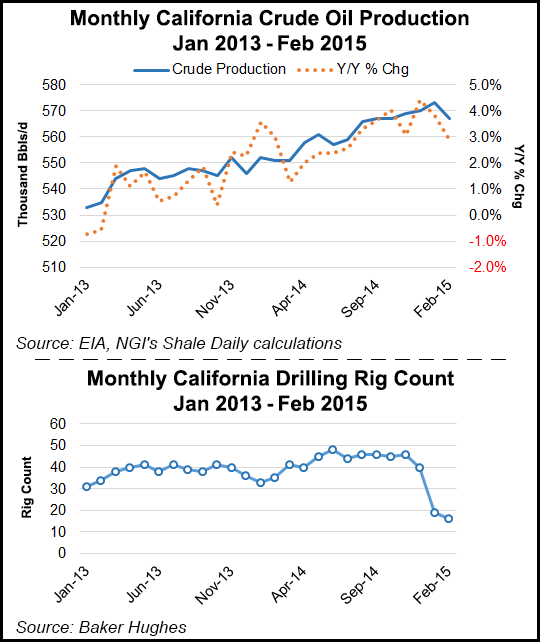California Lawmakers Blast Agency Over Missing Oil-Produced Water Data
State lawmakers and critics of California’s agency overseeing oil/natural gas activities in the state were stirred up again this week over the Department of Conservation’s (DOC) failure to meet an April 30 deadline for submitting data on oil produced water. The data filing had been mandated by SB 1281, which was passed last year.

The law’s author, Sen. Fran Pavley, a critic of DOC and its Division of Oil, Gas and Geothermal Resources (DOGGR), told news media on Wednesday that DOGGR’s failure to meet the deadline was another example of its “poor management and lax regulation of the oil/gas industry,” as reported by the Los Angeles Times. It is not the first time the agency has been criticized in the matter (see Shale Daily, May 5).
In a letter to Pavley from DOC Director Mark Nechodom, the missed deadline was attributed to “unforeseeable personnel and technical challenges.” Nechodom said SB 1281 “requires management of vast amounts of data for which neither DOGGR, nor the oil/gas industry has developed capacity in the past.”
From DOGGR’s perspective, a Sacramento-based spokesperson told NGI‘s Shale Daily on Thursday that “getting the information right is the most important element.” At issue is the requirement under the Pavley law that oil/gas operators file online quarterly water reports to DOGGR, which notified operators about the new requirement last December.
“The division feels it has a firm grasp on the scale and complexity of the data now, and will work diligently to meet subsequent reporting deadlines,” the DOGGR spokesperson said. The next deadline for filing data is July 31.
In his letter to Pavley, Nechodom called SB 1281’s added requirements “extensive,” pointing out that previously DOGGR tracked 40 elements pertaining to water volumes associated with each individual oil/gas well. To meet the new requirements, the state agency now has identified approximately 400 data elements per well, he said.
Quarterly data reports from operators are to give specifics on the source, quality and treatment of all injected waters, along with the quality, treatment and disposal method of all produced waters. In addition, they now also must give the source, quality and use of all treated and recycled waters used in oil/gas field activities.
The law strives to have DOGGR track more closely the water produced as part of oil production in the state, which roughly sees 19 gallons of water for every gallon of oil produced (see Shale Daily, Sept. 26, 2014).
The missed reporting deadline is part of a series of alleged missteps that lawmakers, environmentalists and media critics have pointed to as shortcoming of DOGGR’s past approach to overseeing oil/gas operators in the state, which is the third-largest oil producer in the country (see Shale Daily, Aug. 6, 2014).
In seeking “forbearance” from state lawmakers, Nechodom told Pavley that his agency is confident that “the data we are collecting and making available to the public will be useful to policymakers as we confront issues related to the Oil/gas industry’s water use and water disposition.”
© 2024 Natural Gas Intelligence. All rights reserved.
ISSN © 2577-9877 | ISSN © 2158-8023 |
